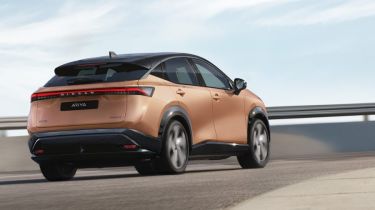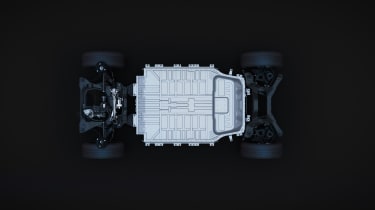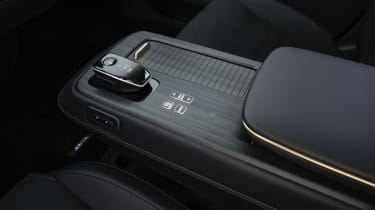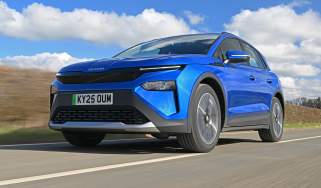Packaging the Nissan Ariya for success
A key part of the Ariya’s success lies under the skin, where you’ll find Nissan’s new, cutting-edge EV platform
The Nissan Ariya is already making waves. It’s been very well received by the motoring press, most notably picking up Auto Express’s coveted New Car of the Year award recently. To understand why it’s such a good EV, you need to peel back the eye-catching body to take a good look under the skin.
It’s all down to what Nissan internally (and affectionately) refers to as the ‘magic flying carpet’, aka the CMF-EV - a bespoke electric vehicle platform for today, and the future. Some 15 EVs will be underpinned by CMF-EV by 2030, but it’s the Ariya that serves as the first demonstration of this cutting-edge architecture.
A different kind of flat pack
The effective starting point of the CMF-EV platform is the battery pack - available in both 63 and 87kWh capacities in the Ariya. It’s been made as flat as possible and sits under the floor, what’s known as a ‘skateboard’ arrangement, forming part of the vehicle’s structure. This gives the Ariya its ‘open floor’ concept, with no space-sapping transmission tunnel as seen in EVs that share platforms with combustion-powered models.
Electric motors sit at either end of the battery pack, meanwhile. And, since there’s no engine taking up space under the bonnet, Nissan’s engineers have been able to place the air conditioning unit much further forward than usual, freeing up even more space for passengers.
All about that space
All these attributes mean that anyone who gets in an Ariya for the first time will be immediately struck by the sense of airiness in the cabin, with its flat floor and abundance of legroom. There’s even a moveable centre console[1] which, like the slimline seats and steering wheel, can be adjusted electrically to allow front-seat passengers to tailor the front of the cabin to their needs[2].
Making the most of the spacious interior is a minimalistic dashboard, which looks fantastically uncluttered due to the use of clever haptic feedback buttons integrated into a wooden panel. Thanks to the relocated air conditioning hardware, it’s also been possible to package a large storage compartment underneath which - again - operates electrically[1].
When retracted, its moveable lid forms a place to put your smartphone or other device - ideal for watching content while waiting for the car to charge. Not that you’ll have time to binge-watch - the CMF-EV’s 130kW rapid charging ability means a 20 to 80 per cent top-up is possible in just 28 minutes[3].
The GT-R’s spirit lives on
The CMF-EV platform is flexible not just in the different battery capacities it can offer, but also the number of motors installed. In the Ariya, it’s possible to have either a single, front-mounted motor, helping maximise boot capacity, or a dual-motor setup featuring Nissan’s ‘e-4ORCE’ all-wheel drive set-up.[4]
e-4ORCE was developed using lessons learned from the R35-generation of Nissan’s GT-R supercar, and its ATTESSA E-TS torque split system, which helps to give the driver incredible control and confidence via automated motor and braking inputs. It isn’t just about handling, however; e-4ORCE also minimises pitching under acceleration and diving when the brakes are applied through regenerative braking at the rear. Normally, this is only done on the front axle.
Bold and beautiful
What’s going on beneath the Ariya also has an effect on the stuff you can see, too. The CMF-EV platform gives Nissan’s design team considerably more freedom than usual. What they’ve come up with is a striking profile making the most of a long wheelbase.
"The Ariya's exterior proportions show what's possible with Nissan's 100 per cent electric-vehicle platform," said Senior Design Director, Giovanny Arroba at the Ariya’s launch. "The surprisingly short overhangs, aggressive roofline and large wheels provide an elegant appearance that flawlessly balances sport and luxury," he added.
At the front are thin LED headlamps made up of four 20mm mini projectors, combined with sequential indicators that give a new meaning to Nissan’s trademark V-motion motif. The other end is just as eye-catching, with a steep C-pillar flowing into the rear of the car. The one-piece light blade and rear light clusters seemingly disappear when the car isn’t in use.
Whether it’s inside, outside or underneath the car, the Ariya provides an EV experience like no other. It’s the car of the future, yet you can drive one today.
[1] Standard on Evolve grade
[2] Power memory steering wheel tilt and telescopic adjustment standard on Evolve grade
[3] Indicated rapid charging time requires use of a CCS rapid charger and may vary depending on factors including charging conditions, battery, and ambient temperature at point of use and if the battery safeguarding technology is activated. Visit nissan.co.uk to find out more.
[4] e-4ORCE available on 87kWh versions
Most Popular
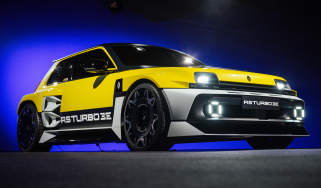
Renault 5 Turbo 3E: 533bhp electric rally homage hits the road in 2027

